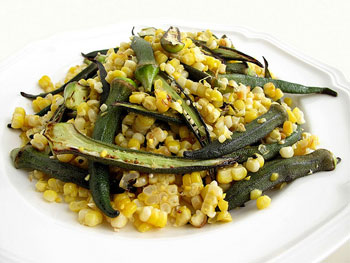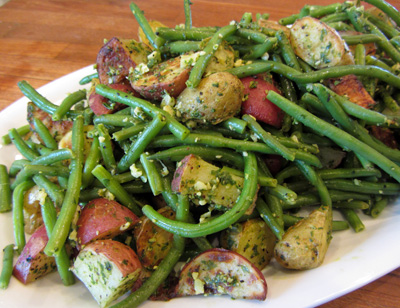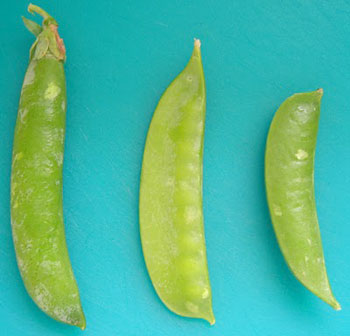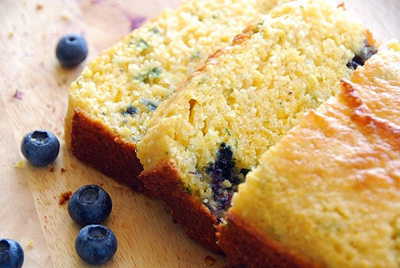 Okra is one of those vegetables that people either love or hate. One reason is the mucous that comes out when it's cooked, which is especially so when it's included in soups or stews. Popular in Africa and Asia, okra is a traditional ingredient in Southern dishes, like gumbo. But most people, if asked, wouldn't even be able to say what else could be made with okra. Sauteing and grilling are excellent and underutilized methods for cooking it.
Okra is one of those vegetables that people either love or hate. One reason is the mucous that comes out when it's cooked, which is especially so when it's included in soups or stews. Popular in Africa and Asia, okra is a traditional ingredient in Southern dishes, like gumbo. But most people, if asked, wouldn't even be able to say what else could be made with okra. Sauteing and grilling are excellent and underutilized methods for cooking it.
Okra can be cooked alone, but it's more interesting when paired with another vegetable, like corn in this recipe. Grilling produces a nice char and smoky taste. The vegetable stays dry and has much less of a tendency to turn gooey. Corn adds a lot of sweetness to the dish to counterbalance the verdant flavor of okra. This recipe is also great for using up leftover grilled corn from a backyard barbecue. Serve it warm or, if you want to save time, make it ahead and enjoy it chilled. But the flavors are best when it's slightly warm off the grill. There's also a variety of okra that's less gooey, perfect for this recipe.

 This is a dish that is perfect for all of the endless “end-of-school-year” pot luck dinners or for BBQs all summer long: Oven Roasted Potato and Green Bean Salad with Skinny Basil “Pesto.”
This is a dish that is perfect for all of the endless “end-of-school-year” pot luck dinners or for BBQs all summer long: Oven Roasted Potato and Green Bean Salad with Skinny Basil “Pesto.” Eat your peas. That's one thing my mother never had to say to me. I always liked peas, even as a little girl. Why? Probably because my mom never overcooked them, and she always used fresh peas (well, maybe frozen occasionally, but never canned).
Eat your peas. That's one thing my mother never had to say to me. I always liked peas, even as a little girl. Why? Probably because my mom never overcooked them, and she always used fresh peas (well, maybe frozen occasionally, but never canned). Blueberries just might be my favorite summer berry. When I was growing up, I enjoyed the blueberry pies my grandma made. I've never been able to recreate that delicious pie. And, for that reason, I come up with all sorts of ways, other than in pie, to enjoy the plump blueberries of summer.
Blueberries just might be my favorite summer berry. When I was growing up, I enjoyed the blueberry pies my grandma made. I've never been able to recreate that delicious pie. And, for that reason, I come up with all sorts of ways, other than in pie, to enjoy the plump blueberries of summer. The farmers' markets here in Southern California are amazing -- you can find dates, figs, guavas, kumquats, passion fruit, persimmons, and pluots, but rarely do you see humble blueberries.
The farmers' markets here in Southern California are amazing -- you can find dates, figs, guavas, kumquats, passion fruit, persimmons, and pluots, but rarely do you see humble blueberries.